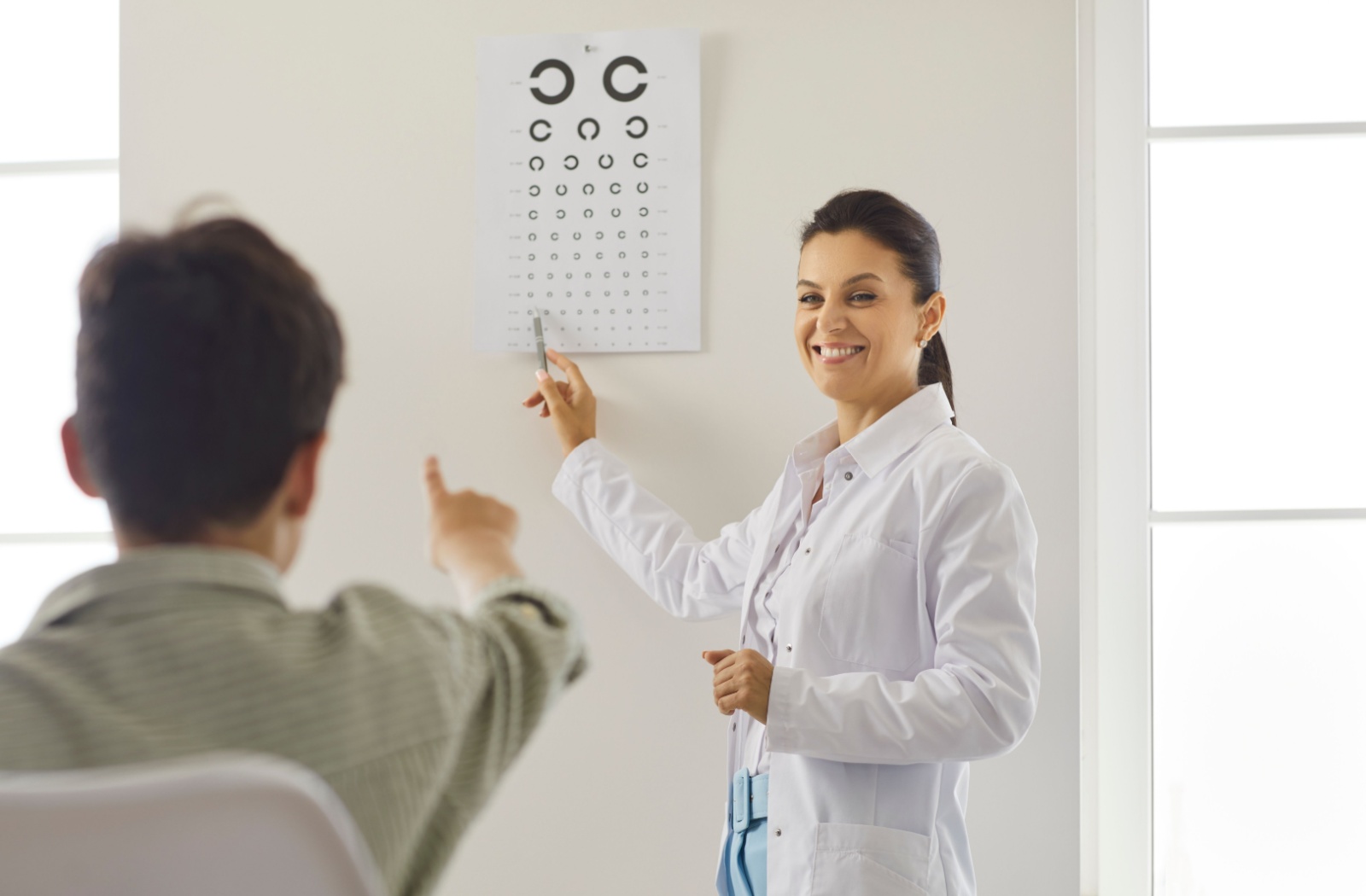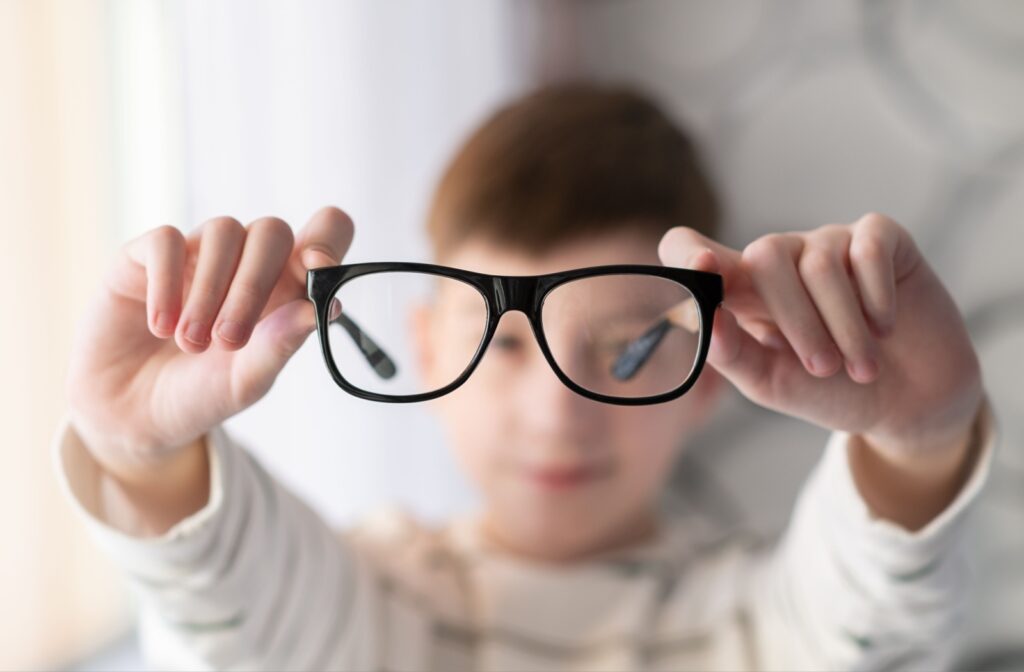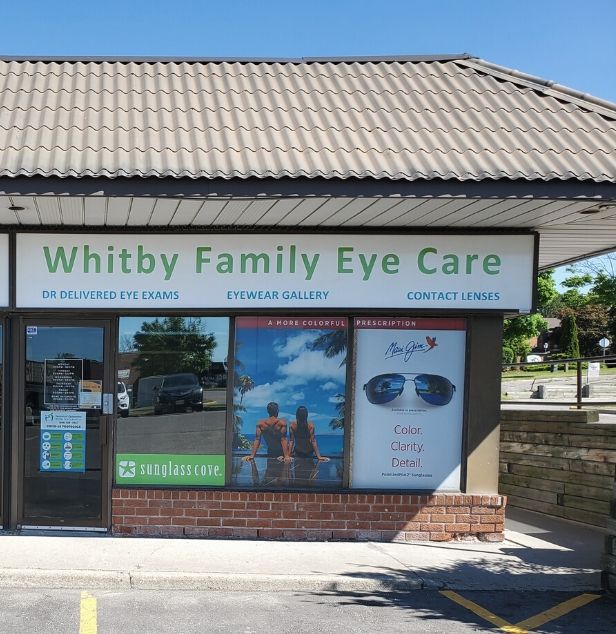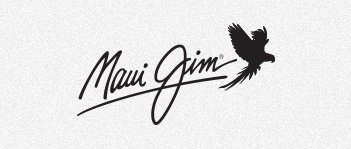Myopia, commonly known as nearsightedness, is a prevalent vision issue that affects many people’s eye health, including a significant number of children and young adults. This condition occurs when the eyeball grows too long or the cornea becomes too curved, leading to difficulty focusing light correctly on the retina. As a result, distant objects appear blurry while close objects remain clear and sharp.
With myopia on the rise, a pressing question often emerges for both parents and myopic individuals themselves: can myopia be reversed?
Although myopia can’t be reversed, myopia can be managed in children, while glasses and contact lenses can correct the effects of myopia in adults.
Understanding Myopia
Before digging into myopia management, it’s crucial to understand what causes the condition. Myopia, commonly known as nearsightedness, occurs when the shape of the eye causes light rays to bend (refract) in a way that causes light to fall in front of the retina rather than on it. This condition typically develops in childhood and tends to progress until the early 20s, at which point it usually stabilizes.
Myopia is influenced by many factors, such as family history and lifestyle choices. Prolonged screen time on computers, tablets, and smartphones, insufficient outdoor activities that include exposure to natural light, and excessive near work like reading without breaks are significant contributors to its development.
Why do we worry about myopia? Advanced nearsightedness sets children up for an increased risk of serious vision threatening diseases in adulthood. These diseases include macular degeneration, glaucoma, retinal detachment and cataracts.
Can Myopia Be Reversed?
The short answer is that, no, myopia can’t be reversed. However, in children, the progression of myopia can be slowed—meaning that we can decrease the rate at which the condition gets worse.
For adults (as well as for children), corrective glasses and contact lenses can help refocus light so that it falls correctly on the retina, thereby improving clarity of vision. In some cases, adults may also be candidates for laser surgery, which alters the shape of the cornea to adjust how light falls on the retina.
Additionally, lifestyle changes like spending more time outdoors and taking regular breaks during activities that require near vision can also help slow the progression of myopia.

Ways to Manage Myopia
There are several common options for managing myopia in children.
1. Specially designed Glasses and Contact Lenses
Specially designed optics worn during the day that alter the focus of light from out in the periphery (side vision) to slow down the progression of axial length.
2. Orthokeratology (Ortho-K)
Ortho-K involves the use of specially designed contact lenses that are worn overnight to temporarily reshape the cornea. This non-surgical method allows for clear vision during the day without the need to wear glasses or contacts. While Ortho-K doesn’t reverse myopia permanently, it offers a daily reprieve from myopia’s effects and helps control myopia in children.
3. Atropine Eye Drops
Low-dose atropine eye drops have shown promise in slowing the progression of myopia in children. These drops work by relaxing the eye muscles responsible for focusing. It’s important to note that, while atropine drops can slow the progression of the condition, they don’t reverse existing myopia.
4. Lifestyle Changes
Childhood myopia was once thought to be genetic but more and more children are becoming nearsighted despite having parents with normal vision. Environmental factors are now thought to be the main reason children are becoming myopic. These factors include reduced time spent outdoors and increased time spent in front of screens. Encouraging children to spend more time outdoors has been linked to reduced myopia progression. Natural light exposure and outdoor activities allow the eye to relax from constant close-up tasks. Balancing screen time with breaks and outdoor play is a simple yet effective strategy.
5. Regular Eye Exams
Consistent monitoring by your optometrist is vital in managing myopia. Regular eye exams can catch changes early by measuring axial length, allowing for timely interventions to slow progression and update corrective prescriptions.
The Future of Myopia Management
Research is ongoing in the field of myopia management. Advances in genetic research have begun to shed light on the hereditary aspects of myopia, offering potential pathways for interventions that could address these underlying factors.
Meanwhile, innovations in optical technologies, such as specialized glasses or contact lenses and advanced laser procedures, provide hope for future treatments that could more directly tackle the root causes of myopia and prevent its progression.
For now, a combination of current interventions, including corrective lenses, lifestyle modifications like increased outdoor time, and myopia control strategies provide the best approach for managing this condition effectively.
Myopia Can Be Managed
While myopia can’t be reversed, its effects can be significantly mitigated with the right tools and strategies. By staying informed and proactive, you can help ensure clear vision and eye health for years to come.
At Whitby Family Eye Care, we’re committed to helping you manage myopia effectively. Whether you’re concerned about your child’s eyesight or your own, our team of experienced optometrists can guide you through the best strategies to slow myopia progression and manage symptoms. Schedule an appointment with us today to explore personalized solutions tailored to your needs.







